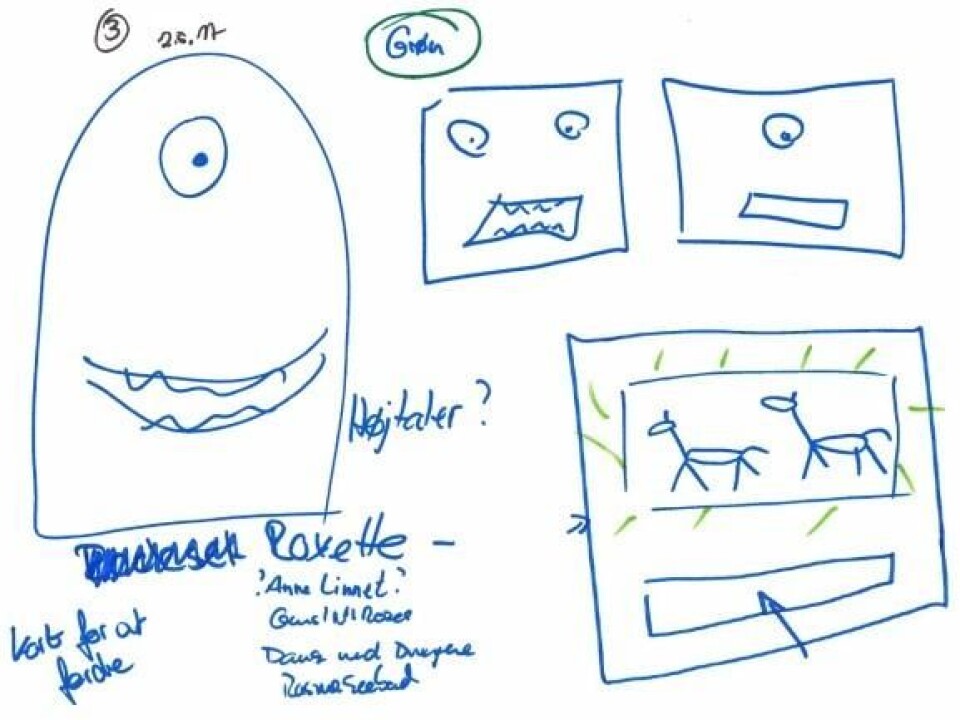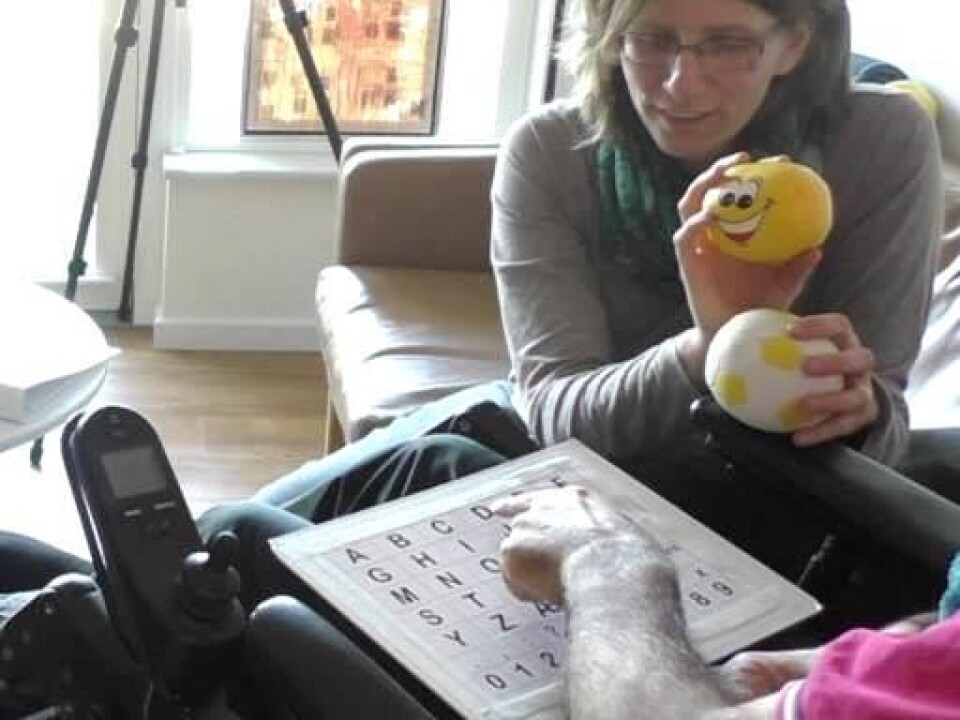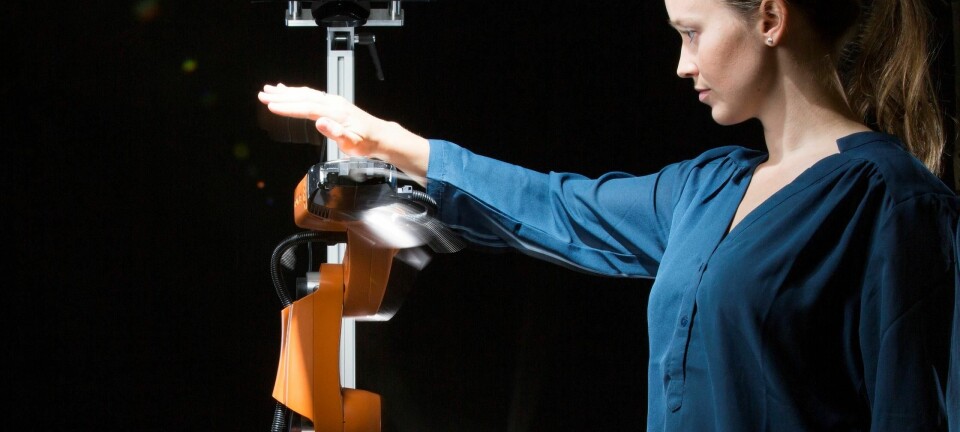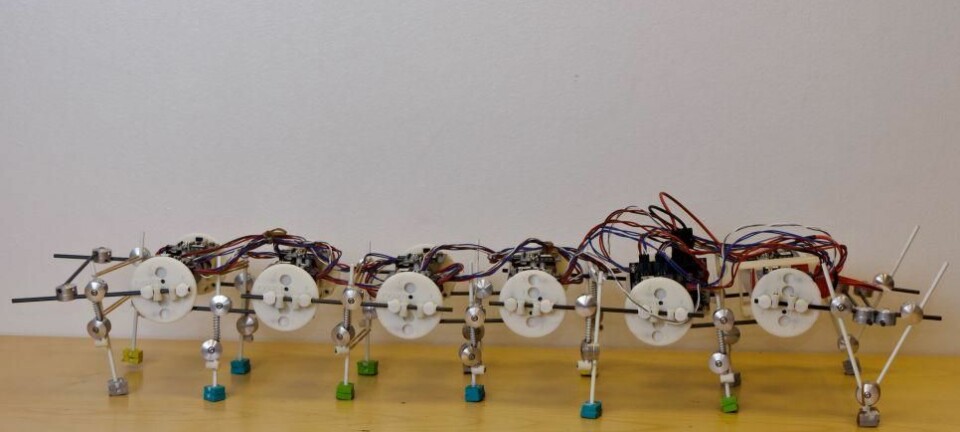
How to build your own personal robot
Researchers in Denmark are helping people who have suffered brain damage to develop their own personal robots that fit in with their existing routines and aid recovery.
More than one million people are hospitalised each year in the EU with a brain injury. Such injuries are often the result of blood clots or accidents, and can occur at any age.
In Denmark alone, around 1,500 children are hospitalised each year with brain damage.
Many people who suffer this kind of injury, experience a loss of control in their daily lives. For example, they might struggle to schedule and remember appointments, they might be unable to write an SMS, or forget to turn off the bathroom light.
The precise nature of the damage and resulting consequences are different for each patient . And each person’s ability to adjust depends on the amount of damage, their ability to adapt to changing circumstances, and their ability to learn new habits.

Today, a multitude of incredibly smart technical solutions are available to help those with brain damage, but of course it is difficult to adjust these solutions to each individual’s specific needs.
One reason for this is the focus on an individual’s disabilities – the damage they sustained and their general symptoms. This is especially true in projects that develop robots for the health care sector.
User involvement leads to better robots
Our project starts with an entirely different premise by focusing on what people suffering brain damage can still do and where they need extra help. We did this by working alongside those who had suffered a brain injury and their carers, to examine their daily routines.
In doing so, we aim to identify how technology could help people in their daily routines, providing them with even more abilities and independence.

We take the individual’s involvement seriously and have included them throughout the entire development process: from the initial idea, through to the design stage, and right up to the production and implementation of the robot.
That means, we build robots together with the people that they are ultimately intended to help.
Read More: Are all your worries about Artificial Intelligence wrong?
Can someone with brain damage really build a robot?
Our journey started two years ago and developed into a close collaboration between two departments at Aalborg University, Denmark, including Matthias Rehm and Kasper Rodil from the Department of Architecture, Design, and Media Technology, as well as Antonia Krummheuer from the Department of Communication and Psychology, and the Brain Injury Center Nord (SCN) in Northern Denmark. Anne Abildgaard from SCN’s living lab is a project leader.

We were invited to an information event at SCN where they showcased a living laboratory—home to people suffering brain damage.
All residents at SCN have serious brain damage caused by either blood clots, a brain haemorrhage, an accident, or drug or alcohol poisoning.
Many have reduced physical functions, where they have difficulties swallowing (dysphagia), are unable to comprehend or formulate language (aphasia) or suffer paresis. They might also suffer reduced mental functions, related to memory, concentration, motivation, initiative, impulse control, social competences, and abilities to learn something new, and to understand instructions, or schedule daily activities.
After their rehabilitation they will need 24/7 access to specialised support, which they have at SCN.
Robots out of the closet
The centre had a number of assistive technologies, but these are often not used due to a lack of time, a lack of adaptability to individual patient needs or technical competences, or because they did not fit into the existing work flow. And as a result, the SCN residents do not use them.
Our approach was to turn this around and adjust the technological solutions to fit the needs of the individual and their carers, instead of asking them to adapt to the technology.
Several meetings made it clear that they were interested in using personal robots that could provide guidance and reminders, and seven SCN residents were interested in participating in the project.
The core team for each robot included the resident, a computer scientist, a sociologist, and a participatory designer. This core team was supported by staff members from SCN, two programmers, and an industrial designer.
We have now delivered the first half of the robots, which are already in use at SCN. The last robots will be ready in autumn and officially unveiled as part of a Robot Welcome Day at SCN.
So let us take a look at two example journeys for two SCN residents and their robots.
Read More: Robots that look like us
Vicki’s robot helps her remember to go swimming
Vicki can remember feelings that are related to objects and events, but she easily forgets appointments and upcoming events. So, Vicki wanted to receive reminders just before an event was due to take place. That way, she will be better prepared the next time she is picked up for a swimming session.
Over several workshops Vicki sketched out how the robot should look and cut out the first cardboard model for us to test in relation to functionality and interaction. From here, our industrial designer created a design space that allowed Vicki to determine the robot’s details, such as the size of the mouth, shape and size of the eyes, and so on.
The robot parts were then manufactured at Aalborg University. Vicki was invited along to get an impression of the different production processes like 3D printing or laser cutting. She also helped to build the robot and decided how it should operate to give her reminders for various activities.
The final robot consists of a head with large eyes and mouth. Together with SCN staff, Vicki feeds the robot with appointments for the week. The robot then reminds her of these appointments with music that she has associated with the different events.
Peter and the SMS-whisperer
Peter (not the patient’s real name) can move his head and use his hands for some tasks, and uses a letter board to communicate, which you can see in the image below.
Peter wanted to be able to send text messages to his brother and daughter without help from staff and reclaim some privacy in his communications.
As mentioned earlier, our goal was to integrate the robots as much as possible in the Peter’s existing routines. So, the final robot consists of peter’s own letter board with a camera attached, and a small robot with a baseball cap.
The camera allows the robot to read what Peter is writing on the letter board, and the robot sends and receives the messages and reads aloud his incoming messages.
Like Vicki, Peter took part in the entire design and development process, but could not draw and build the robot himself. Instead, we held several workshops where he could decide what we should do. We then drew it, cut out cardboard models, and built the robot for him.
Read More: DIY kit makes building robots easy
Personal robots for everybody
The robots are developed for the needs of the individual. When Peter starts to use his robot, he will reclaim privacy and independence while communicating with his relatives. Vicki meanwhile, will have an overview of her appointments and will be more prepared for them.
Both of them have been along for the entire ride, and so have a sense of ownership over their robot helpers. This is true for their carers too, who were also involved in the process.
So, we are optimistic that they will actually use the robots on a daily basis.
To be continued…
When the rest of the robots are delivered to SCN, our focus will shift to examining how the robots change and/or support the daily life of the individual.
This is one of the few times where such a development project does not end after the product has been delivered. Instead, we will track the progress of the study participants for at least a year.
With this project we have shown that it is possible to create advanced assistive technology in a close cooperation with the intended user, even if they are suffering severe health problems. The logical next step is now to examine how this process can be transferred to other contexts.
The technical solutions for each robot are different, according to the different tasks that they should perform. But some of the solutions are also applicable in different contexts, for example, the underlying technology that Vicki uses to program her appointments is also used in two of the other robots.
The next step from an engineering perspective is to rethink robot design and configuration to create more individualised building blocks.
---------------
Read this article in Danish at ForskerZonen, part of Videnskab.dk
Acknowledgment: The project is partly supported by Helsefonden and Spar Nord Fonden.
Translated by: Matthias Rehm









